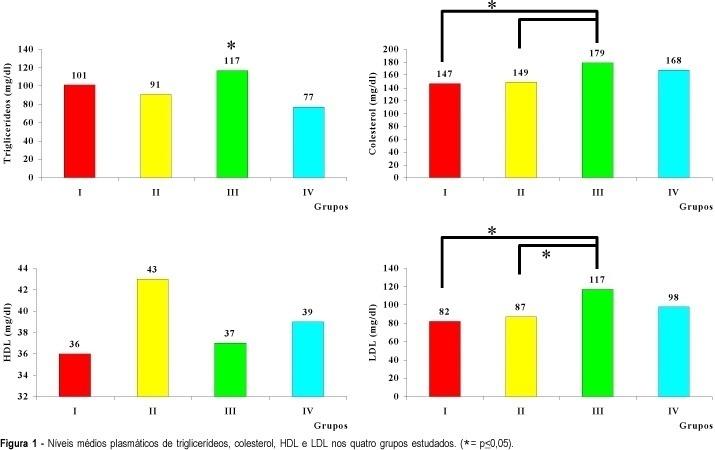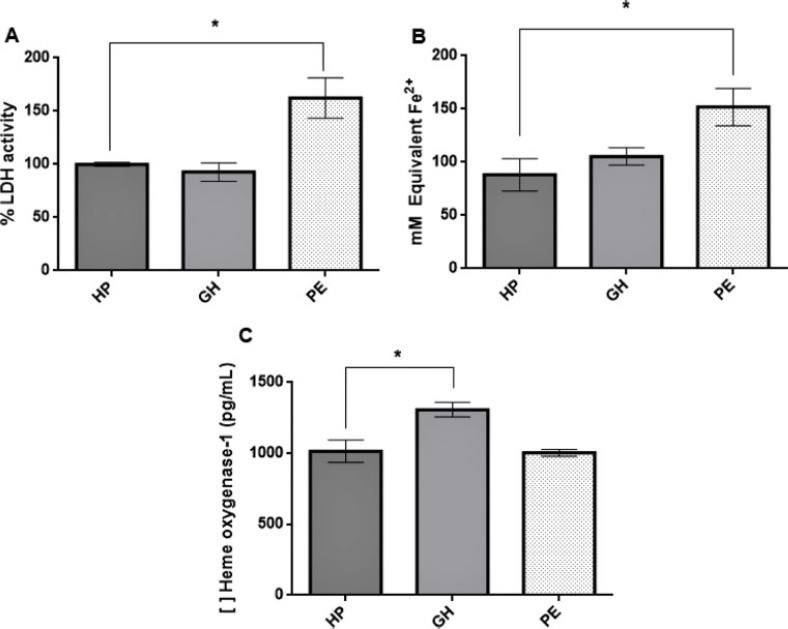Summary
Revista Brasileira de Ginecologia e Obstetrícia. 2021;43(12):885-886
Summary
Revista Brasileira de Ginecologia e Obstetrícia. 2021;43(12):887-893
The purpose of the present study is to standardize and evaluate the use of the immunoglobulin G (IgG) antibody avidity test on blood samples from newborns collected on filter paper to perform the heel test aiming at its implementation in ongoing programs.
Blood samples from newborns were collected on filter paper simultaneously with the heel prick test. All samples were subjected to immunoglobulin M IgM and IgG enzyme-linked immunosorbent assays (ELISA). Peripheral blood was collected again in the traditional way and on filter paper from newborns with high IgG levels (33). Three types of techniques were performed, the standard for measuring IgG in serum, adapted for filter paper and the technique of IgG avidity in serum and on filter paper. The results of the avidity test were classified according to the Rahbari protocol.
Among the 177 samples, 17 were collected in duplicate from the same child, 1 of peripheral blood and 1 on filter paper. In this analysis, 1 (5.88%) of the 17 samples collected in duplicate also exhibited low IgG avidity, suggesting congenital infection. In addition, the results obtained from serum and filter paper were in agreement, that is, 16 (94.12%) samples presented high avidity, with 100% agreement between the results obtained from serum and from filter paper.
The results of the present study indicate that the avidity test may be another valuable method for the diagnosis of congenital toxoplasmosis in newborns.
Summary
Revista Brasileira de Ginecologia e Obstetrícia. 2022;44(2):89-90
Summary
Revista Brasileira de Ginecologia e Obstetrícia. 2004;26(2):89-96
DOI 10.1590/S0100-72032004000200002
PURPOSE: to evaluate knowledge, opinion and practice of gynecologists/obstetricians regarding induction of abortion. Method: a pretested, structured questionnaire was sent to gynecologists/obstetricians affiliated to FEBRASGO. They were asked to answer and return the questionnaire in a self-addressed, prepaid envelope, without identification of the respondent so as to preserve anonymity. Knowledge about the legal situation of abortion in Brazil, opinion about it and practice if confronted with abortion requests were questioned. RESULTS: approximately 90% of the respondents believed that abortion is legal for pregnancy resulting from rape or in case of risk to a woman's life and for 31.8% in case of severe fetal malformation. In their opinion abortion should be permitted in the case that pregnancy is a risk for a woman's life (79.3%), fetal malformation (77.0%) and after rape (76.6%), added to 9.9% who expressed that abortion should be permitted in all circumstances. Two thirds wrongly thought that a judicial order is required to practice a legal abortion and only 27.4% knew that a written request by the woman is required. Confronted with unwanted pregnancy, 77.6% of female gynecologists/obstetricians and 79.9% of partners of male respondents had an abortion, 40% would help a client and 48.5% a relative in the same situation. CONCLUSION: gynecologists/obstetricians lack knowledge on the legal situation of abortion although their opinion and practice are favorable.
Summary
Revista Brasileira de Ginecologia e Obstetrícia. 2000;22(2):89-94
DOI 10.1590/S0100-72032000000200005
Purpose: to evaluate the lipid profile (cholesterol, triglycerides, HDL and LDL) of women with polycystic ovary syndrome (PCO) and compare it to that of women with ovulatory menstrual cycles. Methods: the patients were divided into two groups, obese and nonobese, based on body mass index, so that it would be possible to determine the joint effect of PCO and obesity on the lipid metabolism of the studied women. We studied 117 women divided into 4 groups: group I (PCO--obese), n = 33; group II (PCO--nonobese), n = 27; group III (control--obese), n = 28; group IV (control--nonobese), n = 29. Results: cholesterol levels were elevated (179 mg/dl) in obese patients with ovulatory cycles (group III) compared to group I (147 mg/dl) and group II (149 mg/dl), as also were triglyceride levels (117 mg/dl) compared to group IV (77 mg/dl) and LDL levels (117 mg/dl) compared to group I (82 mg/dl). Conclusion: these data suggest that alterations in lipid profile are related to obesity only.

Summary
Revista Brasileira de Ginecologia e Obstetrícia. 2022;44(9):891-898
To evaluate the effect of neuromodulatory drugs on the intensity of chronic pelvic pain (CPP) in women.
Searches were carried out in the PubMed, Cochrane Central, Embase, Lilacs, OpenGrey, and Clinical Trials databases.
The searches were carried out by two of the authors, not delimiting publication date or original language. The following descriptors were used: chronic pelvic pain in women OR endometriosis, associated with MESH/ENTREE/DeCS: gabapentinoids, gabapentin, amitriptyline, antidepressant, pregabalin, anticonvulsant, sertraline, duloxetine, nortriptyline, citalopram, imipramine, venlafaxine, neuromodulation drugs, acyclic pelvic pain, serotonin, noradrenaline reuptake inhibitors, and tricyclic antidepressants, with the Boolean operator OR. Case reports and systematic reviews were excluded.
The following data were extracted: author, year of publication, setting, type of study, sample size, intervention details, follow-up time, and results.
A total of 218 articles were found, with 79 being excluded because they were repeated, leaving 139 articles for analysis: 90 were excluded in the analysis of the titles, 37 after reading the abstract, and 4 after reading the articles in full, and 1 could not be found, therefore, leaving 7 articles that were included in the review.
Most of the studies analyzed have shown pain improvement with the help of neuromodulators for chronic pain. However, no improvement was found in the study with the highest statistical power. There is still not enough evidence that neuromodulatory drugs reduce the intensity of pain in women with CPP.

Summary
Revista Brasileira de Ginecologia e Obstetrícia. 2021;43(12):894-903
Gestational hypertension (GH) is characterized by increased blood pressure after the 20th gestational week; the presence of proteinuria and/or signs of end-organ damage indicate preeclampsia (PE). Heme oxygenase-1 (HO-1) is an antioxidant enzyme with an important role in maintaining endothelial function, and induction of HO-1 by certain molecules shows potential in attenuating the condition’s effects over endothelial tissue. HO-1 production can also be stimulated by potassium iodide (KI). Therefore, we evaluated the effects of KI over HO-1 expression in human umbilical vein endothelial cells (HUVECs) incubated with plasma from women diagnosed with GH or PE.
Human umbilical vein endothelial cells were incubated with a pool of plasma of healthy pregnant women (n = 12), pregnant women diagnosed with GH (n = 10) or preeclamptic women (n = 11)with or without the addition of KI for 24 hours to evaluate its effect on this enzyme expression. Analysis of variance was performed followed by Dunnet’s test for multiple comparisons between groups only or between groups with addition of KI (p ≤ 0.05).
KI solution (1,000 µM) reduced HO-1 in the gestational hypertension group (p = 0.0018) and cytotoxicity in the preeclamptic group (p = 0.0143); treatment with KI reduced plasma cytotoxicity but did not affect the preeclamptic group’s HO-1 expression.
Our findings suggest that KI alleviates oxidative stress leading to decreased HO-1 expression; plasma from preeclamptic women did not induce the enzyme’s expression in HUVECs, and we hypothesize that this is possibly due to inhibitory post-transcriptional mechanisms in response to overexpression of this enzyme during early pregnancy.

Summary
Revista Brasileira de Ginecologia e Obstetrícia. 2022;44(9):899-900